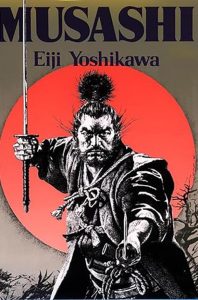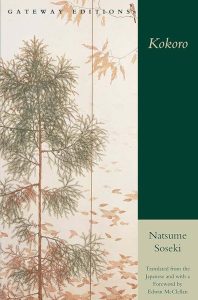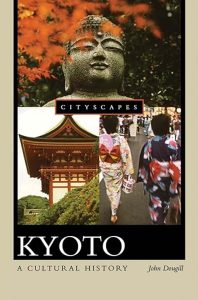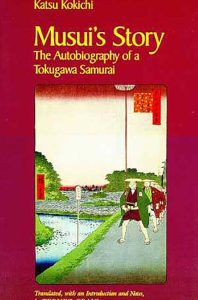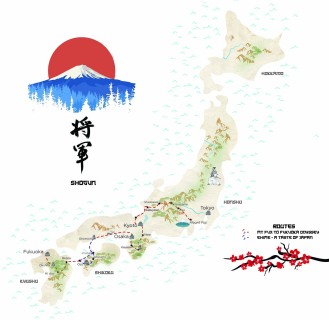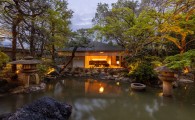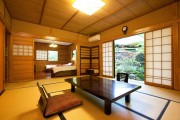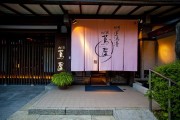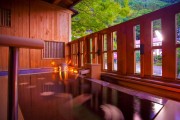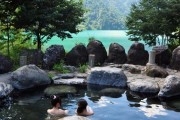Shōgun. The supreme commander of all Japan. The reins of power rested firmly in their hands for over 700 years. They traversed the country warring, ruling and dominating this spectacular landscape and culture.
Kaidō...these were the roads established in the Edo period under the Shōgun's reign. Our Odyssey takes in parts of the Nakasendō and Kōshū Kaidō which connect Edo (Ancient Tokyo) and Kyoto as well as the ancient trails of the Kumano Kaidō south of Nara and Osaka.
The samurai, whom the Shōgun ruled, are often depicted as stoic warriors whose legacy rarely extended beyond the battlefield. Yet their period of feudal history is remarkably recent and therefore intimately linked to all things modern and Japanese. Only 150 years ago, Japan was in a state of transition as foreigners were first let into the country and the feudal system dominated by the Shōgun collapsed (comparatively feudal Europe ended roughly 500 years ago). How did it all start?
In the 12th century, a transformative era dawned on the islands of Japan as warriors, loyal to their respective clans as they clashed... forever altering the course of Japanese history. The Shōgun emerged, at the summit of a feudal system, stacked with samurai elite reigning over the peasants and merchants. These elite warriors with a profound sense of honor and duty, as well as an unwavering commitment to their lords, established themselves as protectors and administrators in a society deeply rooted in feudalism. Their guiding principles were the codes of Bushido, that emphasized loyalty, courage, and ethical conduct.
As we embark on a journey traversing the land of the rising sun, we'll follow ancient kaidos (historic routes) across the land - walked and ridden - for centuries. They will guide us to explore the historic landscapes where these warriors ruled, conquered and honed their skills. From ancient castles to sacred shrines, our exploration will unveil the multifaceted legacy, showcasing their contributions to art, philosophy, governance and, of course, the way of Bushido.
Mixing traditional Ryokan Inns and their inimitable authentic experience with Onsen hot springs and luxury unique accommodation, this Odyssey has accommodation covered like no other. Post-ride there is nothing better than luxuriating in the hotsprings - Japan does this well!
We begin in Fukuoka, with a culinary bang! But soon to be exploring this lovely rural island of Kyushu, where smoldering volcanoes, cascading waterfalls and steaming onsen baths await! Nature rules supreme here but there is a spectacular underlying history of Shōgun and strongholds! From Oita to Beppu, Fukuoka to Mt Aso, this beautiful start in rural Japan is at its finest. This is an amazing little lesser-known corner of Japan.
From the Kii Peninsula - rolling matcha tea fields merge into remote, rugged and mountainous ancient pathways - which has long been considered sacred ground - and the Kumano Kaido, we will venture into the mystical realm of Buddhist pilgrims, exploring time-honoured temples, unravelling the secrets of the ancient Nara region. This is where the first Japanese Emperors established their capital, leaving behind a tapestry of ancient shrines, temples, tombs and monuments dotted across green rolling hills.
Looping into Ehime's hinterland for picture-perfect Japan, captured all in one prefecture - sacred mountains, Mount Ishizuchi, castle towns, Ozu, villages frozen in time, Uchiko - all spotted with Onsen baths, temples, shrines and hyper modern hotels too! From there to our island hopping adventure on the Shimanami Kaido - this bike path from Honshu to Shikoku stretches across the islands of the Setouchi Sea and is genuinely considered one of the highlights of any cycling in Japan. Then we enter our half way mark by speeding across on Shinkasen - a must-do experience in Japan!
Then for our neon city stage break we arrive in ancient Kyoto, filled with temples, shrines, Geisha and history. From there our route takes us briefly along the Sea of Japan for a coastal rest, before rolling through UNESCO site, Shirakawa. Breath-taking, serene, and charming, this is immense riding country.
And where better to end this Odyssey than along Kaidos through ancient forested roads and villages trapped in time, in Kiso and the Japanese Alps and ending at Fujisan! (Mount Fuji) The symbol of purity, perseverance and eternity, sacred throughout Japanese history. Its steep slopes and snowy peak inspire respect and contemplation, something we will imbue as we reflect on our month-long Shōgun Odyssey.

SHŌGUN
Fukuoka to Mount Fuji
Enter your details below to register your interest in Shōgun - Fukuoka to Fuji
Sean combines attention to detail with rugged charm and the ultimate bike handling and mechanical skills. Paired with a deep love of Japan and everything Japanese, he is an all-round class tour leader for this Odyssey of Odysseys!
Late 2023 saw us team up with Cyclist Magazine Australia/NZ to head to Ehime Prefecture. Guides Chris and Alice headed over to Japan to explore and experience the best riding in the country. From this beginning grew our epic Shogun Odyssey. In honour of this beginning, we are offering a 5 day epic taster for those a little shorter on time. We call this Experience Ehime - A taste of Japan - To read about this journey check out Cyclist Magazine February 2024 Edition.
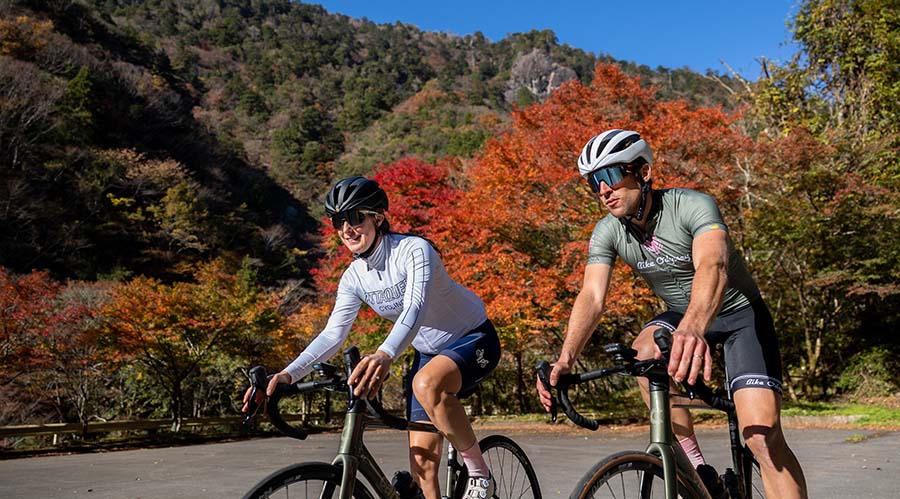
- Follow the Shōgun! We will experience sado, shodo and ikebana - tea ceremony, calligraphy and flower arranging. And we will dine with a Geisha!
- Onsen - There are almost 3000 Onsen (hot spring baths) in Japan and they are the ultimate post ride indulgence which we will make the most of!
- Fukuoka and starting with amazing food in the city named in the top 6 foodie destinations in the world. What will we eat? Likely a version of ramen - the city's signature dish!
- History - Being the closest big island to the mainland Kyushu has Samurai and European contact history in abundance!
- Mt Aso - mirroring our volcanic end at Fuji, Mt Aso is steaming, bubbling and alive! It also provides an amazing backdrop for our final loop ride.
- Osaka - Our rest day to revisit modern Japan in its second city with the best ramen and street food along the canals, amongst the nightlife of central Dotombori.
- Optional Himeji - Surely the finest castle in the country - a short 30 minute trip from our rest day for those keen on this amazing historic location.
- Our Shinkansen dash across Honshu - you cannot come to Japan without at least one bullet train journey! Our van and bikes will need a good headstart as we train into Osaka!
- Onomichi - This historic pretty port city filled with temples is the start of our island-hopping adventure on the Shimanami Kaido.*
- Shimanami Kaido - Amazing bike paths let us hop across islands between Honshu and Shikoku with breathtaking scenery at every bend.*
- Epic Mount Ishizuka! Classic riding on tiny forested roads to shrines and temples - Ehime at its best.*
- Matsuyama - A beautiful historic onsen town to explore from our class hotel!*
- Ehime riding - magic quiet roads capturing Japan at its best.
- Hidden Onsen! After ferrying across Beppu Bay to arrive in Kyushu we will relax in Japan's most renowned onsen town - Beppu.
- Kyushu is Japan's more beautiful natural playground and it has an abundance of geothermically heated mineral waters and we will certainly take advantage of them.
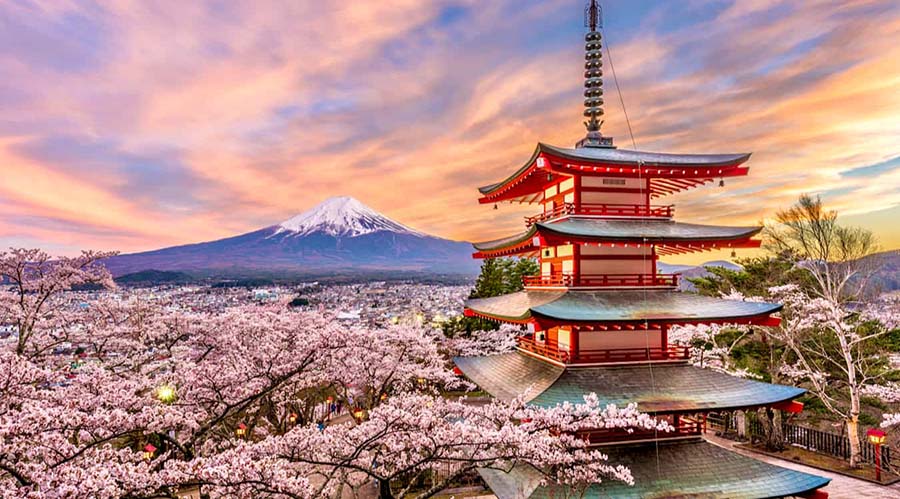
- The sanctuary Oku-no-in at Kyo-san - Established by Kobo Daishi and also his final resting place (one of the most prominent figures in Japanese cultural history), this is one of the most spiritual and impressive places in Japan.
- Live like a monk! Just for one night we will sleep and experience life in a Buddhist Temple.
- A spiritual journey across the Kii Peninsula following the ancient Kumano Kodo network of roads.
- The rugged and forested Kiso Valley in southwestern Nagano is a fascinating step back in time and an absolute pleasure to explore by bike.
- Taste some of Japan's best sake in Takayama's ancient merchant district, the Sanmachi-dori with classic Japanese architecture lining the beautiful archaic streets.
- Serene UNESCO Shirakawa-go - remote authentic villages with traditional gassho-zukuri farmhouses, tiny roads hardly wide enough for a cart - amazing & challenging riding. This is quiet, rural, idyllic Japan.
- Ryokan - There is no better way to immerse yourself in traditional Japanese culture than with a stay at an authentic and luxurious ryokan in the countryside. They are nothing short of amazing experiences and we will have many of them!
- Like the ancient roads of Rome, the kaidos of Japan formed a network of access and authenticity. Nowadays they link the best historic villages in the country. They also tend to be tiny, inaccessible roads for cars making them the perfect historical riding experience!
- Follow the Shōgun! We will experience sado, shodo and ikebana - tea ceremony, calligraphy and flower arranging. And we will dine with a Geisha!
- Kyoto - Experience Japan's ancient capital with centuries old shrines and temples - unmissable Japan!
- The Japanese Alps - Ancient unchanged beauty - old forest pathways to cycle, rugged mountains to climb and Edo period villages to visit - idyllic Japan!
- The Fujioka is a great location to end, from our entrance over the spectacular Misaka Pass to a stunning warm ride down around the lakes with Fuji looming over you.
- The Fuji 5 lakes - with spectacular views of this iconic, revered and perfectly formed volcanic mountain. Climbing it is a post-tour option and this is something most Japanese feel they should do once in their lifetime!
| Stage | Dates | Days/Nights | Distance | Grading* | Cost (USD) |
|---|---|---|---|---|---|
| Stage 1. Fukuoka to Kyoto | 6 - 22 October | 17 (16 nights) | 979km | USD 11,900 | |
| Stage 2. Kyoto to Mount Fuji | 22 October - 1 November | 11 (10 nights) | 765km | USD 7700 | |
| The Odyssey. Fukuoka to Mount Fuji | 6 October - 1 November | 27 (26 nights) | 1744km | USD 17,900 |
| Stage | Dates | Days/Nights | Distance | Grading* | Cost (USD) |
|---|---|---|---|---|---|
| Experience Ehime | On request | 6 (5 nights) | 306km | $3,900 |
| Stage | Stage 1. Fukuoka to Kyoto | Stage 2. Kyoto to Mount Fuji | The Odyssey. Fukuoka to Mount Fuji |
| Dates | 6 - 22 Oct | 22 Oct - 1 Nov | 6 Oct - 1 Nov |
| Days | 17 (16 nights) | 11 (10 nights) | 27 (26 nights) |
| Distance | 979km | 765km | 1744km |
| Grading* | 3.5 x |
3.5 x |
3.5 x |
| Cost (USD) | USD 11,900 | USD 7700 | USD 17,900 |
| Stage | Dates | Days/Nights | Distance | Grading* | Cost (USD) |
|---|---|---|---|---|---|
| Stage 1. Fukuoka to Kyoto | 30 March - 15 April | 17 (16 nights) | 979km | USD 11,900 | |
| Stage 2. Kyoto to Mount Fuji | 15 - 25 April | 11 (10 nights) | 765km | USD 7700 | |
| The Odyssey. Fukuoka to Mount Fuji | 30 March - 25 April | 27 (26 nights) | 1744km | USD 17,900 |
| Stage | Stage 1. Fukuoka to Kyoto | Stage 2. Kyoto to Mount Fuji | The Odyssey. Fukuoka to Mount Fuji |
| Dates | 30 Mar - 15 Apr | 15 - 25 Apr | 30 Mar - 25 Apr |
| Days | 17 (16 nights) | 11 (10 nights) | 27 (26 nights) |
| Distance | 979km | 765km | 1744km |
| Grading* | 3.5 x |
3.5 x |
3.5 x |
| Cost (USD) | USD 11,900 | USD 7700 | USD 17,900 |
| Stage | Dates | Days/Nights | Distance | Grading* | Cost (USD) |
|---|---|---|---|---|---|
| Stage 1. Fukuoka to Kyoto | 5 - 21 October | 17 (16 nights) | 979km | USD 11,900 | |
| Stage 2. Kyoto to Mount Fuji | 21 - 31 October | 11 (10 nights) | 765km | USD 7700 | |
| The Odyssey. Fukuoka to Mount Fuji | 5 - 31 October | 27 (26 nights) | 1744km | USD 17,900 |
| Stage | Stage 1. Fukuoka to Kyoto | Stage 2. Kyoto to Mount Fuji | The Odyssey. Fukuoka to Mount Fuji |
| Dates | 5 - 21 Oct | 21 - 31 Oct | 5 - 31 Oct |
| Days | 17 (16 nights) | 11 (10 nights) | 27 (26 nights) |
| Distance | 979km | 765km | 1744km |
| Grading* | 3.5 x |
3.5 x |
3.5 x |
| Cost (USD) | USD 11,900 | USD 7700 | USD 17,900 |
| Stage | Dates | Days/Nights | Distance | Grading* | Cost (USD) |
|---|---|---|---|---|---|
| Stage 1. Fukuoka to Kyoto | 4 - 20 October | 17 (16 nights) | 979km | USD 12,500 | |
| Stage 2. Kyoto to Mount Fuji | 20 - 30 October | 11 (10 nights) | 765km | USD 8100 | |
| The Odyssey. Fukuoka to Mount Fuji | 4 - 30 October | 27 (26 nights) | 1744km | USD 18,800 |
| Stage | Stage 1. Fukuoka to Kyoto | Stage 2. Kyoto to Mount Fuji | The Odyssey. Fukuoka to Mount Fuji |
| Dates | 4 - 20 Oct | 20 - 30 Oct | 4 - 30 Oct |
| Days | 17 (16 nights) | 11 (10 nights) | 27 (26 nights) |
| Distance | 979km | 765km | 1744km |
| Grading* | 3.5 x |
3.5 x |
3.5 x |
| Cost (USD) | USD 12,500 | USD 8100 | USD 18,800 |
- Grading Notes - Shogun averages 75km per day and 1450m of elevation per day throughout both stages. The distance denotes it as a 3 banana odyssey, the elevation 4 bananas. The road quality is very high, with few rough sections and lots of quiet, small well-surfaced roads. Hence we have concluded it is a 3.5 banana Odyssey! For more info see our gradings page.
- Please note Shogun is priced in USD.
- Rates are based on twin share. Single supplement 120USD per night.
- * denotes highlights which are part of our Experience Ehime tour.
The choice is exceptional on this historic Odyssey. We stay in luxury Ryokans, Buddhist temples, traditional inns, Onsen hotels and hyper-luxurious chic architectural gems! Here are some places you will stay at on the tour:
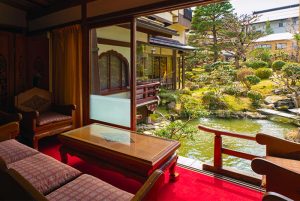
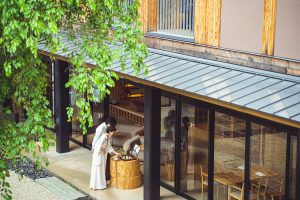

Quality Ryokan and Onsen are highlights of any trip to Japan.
Ryokan are Japanese-style inns found throughout the country, especially where there are hot springs. They are an opportunity to experience the traditional Japanese lifestyle and hospitality, incorporating tatami rooms, futon beds, Japanese-style baths and exceptional local cuisine. They often offer both Japanese and Western bedding but the style and atmosphere of these accommodations is truly unique.
Onsen are hot baths, fed by the innumerate hot springs - there are over 3000 in Japan! For centuries hotels, resorts and ryokan have set up around the hot springs. They can be indoors or outdoors and they are an integral part of Japanese culture, as well as a brilliant way to relax post ride!
Japanese cuisine is renowned for not only its presentation and freshness, but also its healthiness. While we will certainly eat exceptional sushi, sashimi, tempura, and ramen, we will also explore the more diverse regional options including gyoza (Japanese dumplings), gyudon (beef, rice all great!), nabe (hot pot!), natto (fermented soybeans), onigiri (rice balls) and of course the tonkatsu ramen of Fukuoka!
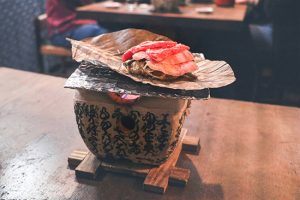
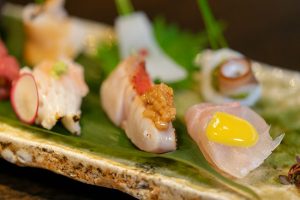
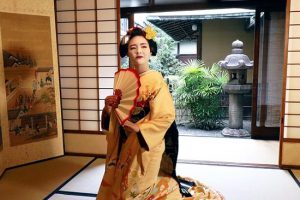

The esteemed title of Shōgun, akin to the role of a commander-in-chief, found its origins in the 700's when military commanders were tasked with recruiting soldiers for specific campaigns. Following the conclusion of these campaigns, the Shōgun's power would revert back to the emperor. However, fast forward to the late 1100s and a pivotal shift occurred under Shōgun Minamoto Yoritomo. He orchestrated the transformation of the Shōgunate title from temporary to permanent and hereditary, securing the most powerful position in Japan and its continuity within his family for successive generations. This manoeuvre left the emperor vulnerable to the Shōgun's influence, as control over the military rested firmly in the hands of the Shōgun. In essence, the emperor became a nominal ruler, while the shogun or influential families acting in the Shōgun's name wielded true power through military dominance.
This dynamic persisted through three Shōgun dynasties. Similar to Europe, Japan developed this feudal society (albeit at a later date than its European counterpart). At the top of Japanese feudal society stood the Shōgun, below were the vassal lords, known as daimyo. These daimyo were sizable landholders, who commanded armies responsible for providing military service when called upon by the Shōgun. Comprising the armies were samurai and lower-ranking soldiers. The samurai - minor nobles - held land under the authority of the daimyo. Peasants occupied the subsequent tier in feudal society, mirroring their majority status in the population. Their labour was the linchpin enabling the smooth functioning of society. Following peasants were the artisans and lowest merchants. Japanese culture esteemed creators—farmers and artisans—above those engaged solely in buying and selling. Over time, these hierarchical positions underwent transformations. By the 1600s, the importance of samurai diminished as warfare receded in significance. Samurai transitioned from small estates to castle towns, assuming administrative roles and the status of artisans and merchants grew as towns and cities flourished, and trade gained prominence in the Japanese economy.
From 1603 to 1867, Japan was under the rule of the Tokugawa Shōgunate and the Shōgun implemented a policy of isolation, closing off Japan from much of the outside world and reaffirming feudal control that had started to loosen. In the 1500s, the initial visits by European traders and missionaries had introduced novel ideas to the island nation. Concerned that increased foreign contact might undermine their authority over the government and the populace, the Tokugawa Shōgunate enacted a comprehensive ban on almost all foreigners. Only one Dutch ship was permitted to land at Nagasaki annually for trading purposes. This prohibition extended beyond Europeans, allowing only a limited number of Chinese individuals each year to enter Japan for trade. Furthermore, the Japanese themselves were restricted from traveling abroad for any reason. The era of isolation came to an end in 1853 when Commodore Matthew Perry of the United States Navy sailed into Edo (Tokyo) Bay. His arrival compelled the Tokugawa Shōgunate to sign a treaty in 1854, permitting trade with the United States. Subsequently, other nations engaged in similar agreements, leading to a significant turning point by 1867. A coalition of lords ousted the Tokugawa Shōgun, propelling Japan onto a trajectory of modernisation and industrialisation.
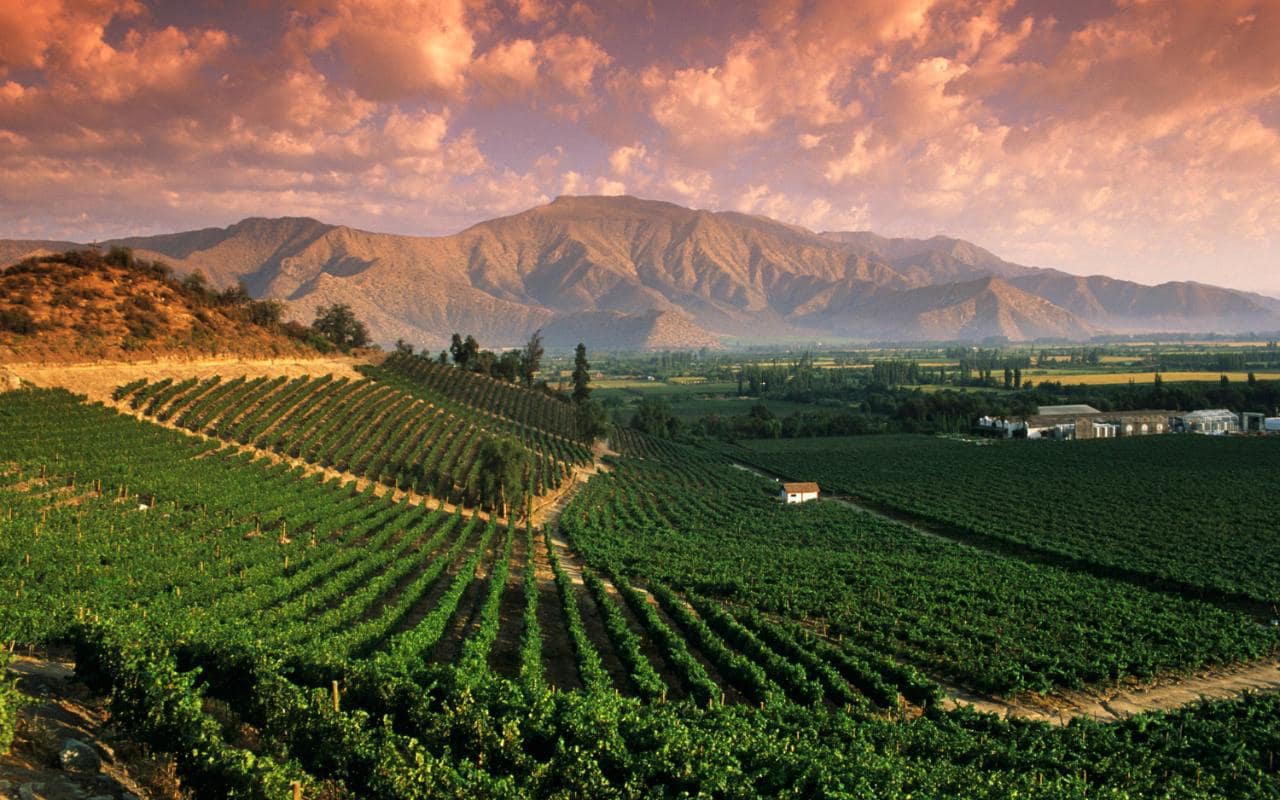
The 3rd Bike Odyssey tour I’ve done and, as always, the team were outstanding in taking care of our biking and tourism needs. Japan was incredible and to have Japanese speaking guides (one local and 2 long-time residents) share their love of the country, was truly fabulous. The routes chosen really showcased the best biking the country had to offer. Great support by them all meant our needs were well and truly met. Well done Bike Odyssey yet again.
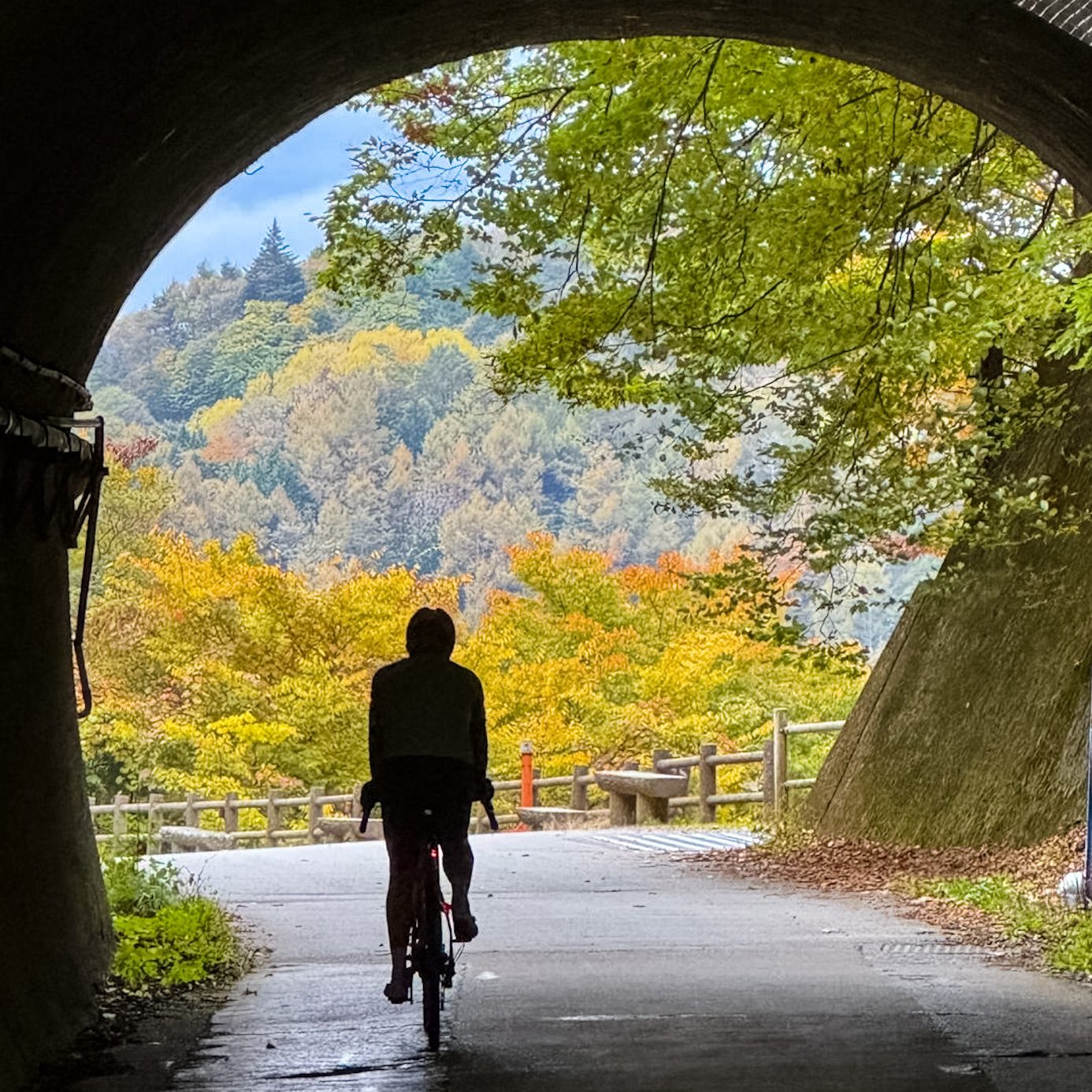
Once again, Bike Odyssey put together a stellar tour. I had more fun on this tour than any of your others. I’ve done numerous tours in Japan and this was by far my favorite.Your team adjusted seamlessly to my unusual riding style and Sean made sure to check in with me every day. Gypsy and Daigo were outstanding – your entire crew were as good as it gets. Aris was on an Odyssey tour I did in Greece, so there was a lot of familiarity. And who doesn’t like Mikey?

The beauty of seeing Mt Fuji in the distance with Mikey leading the way was a memory I shall not soon forget.
Everyday has been beautiful, challenging and awe inspiring but ending with such majesty and seeing and feeling the love Mikey has for this land was an added bonus. We have had every weather condition during this adventure and your whole TEAM has managed to keep us all safe and provided us Americans with a new appreciation for this beautiful country.
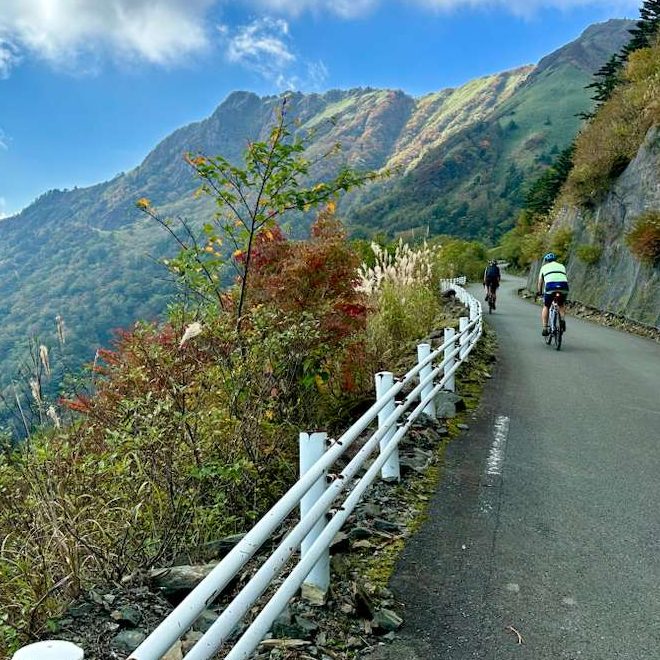
Shogun by Bike Odyssey is an absolutely brilliant ride through rural and quiet rindo roads, classic climbs and the Shimanami Kaido and with some town and minimal city riding. Great exposure to Japan’s scenery, culture and food. Mechanical support, meals and snacks, logistics and local knowledge were all spot on. I would do it again!
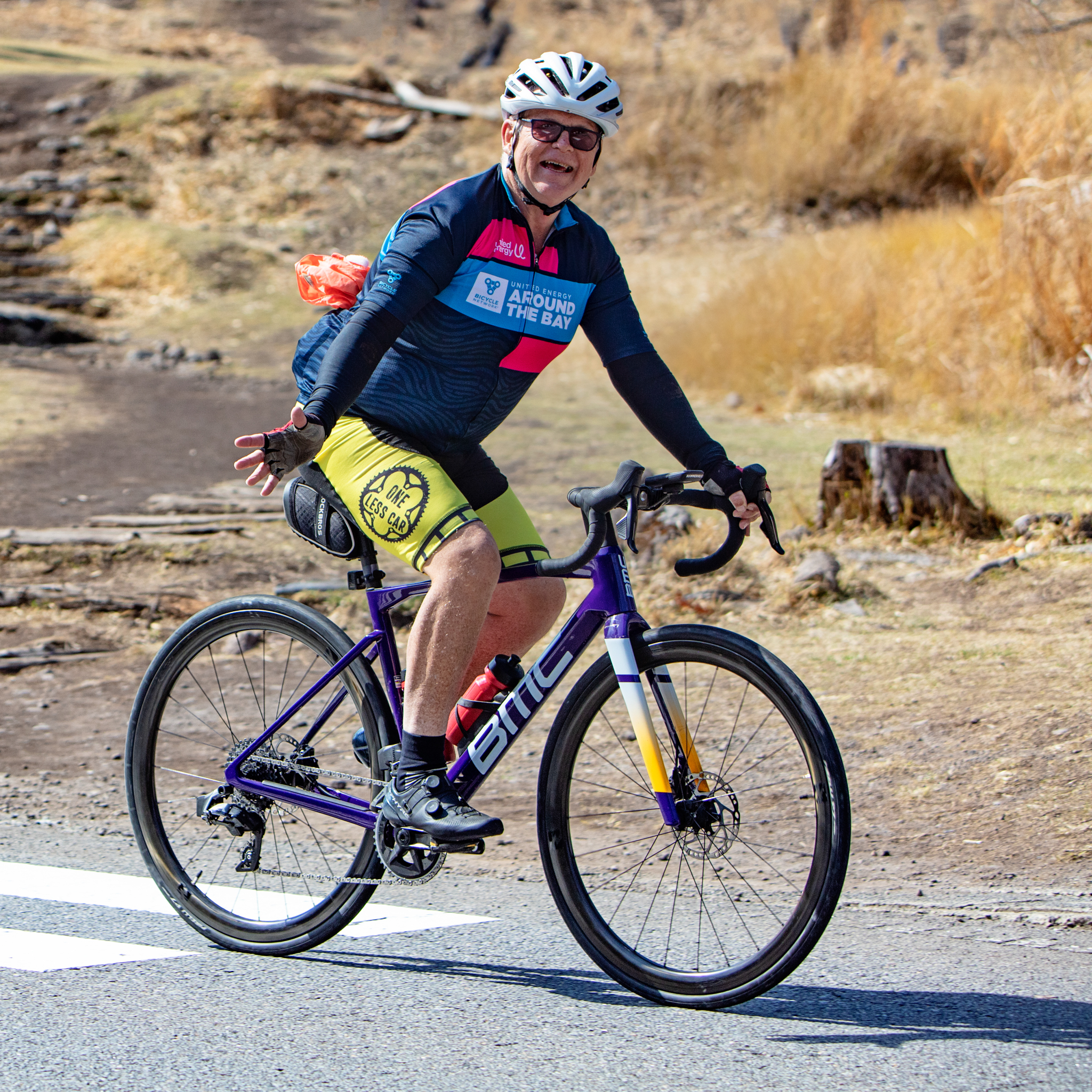
The inaugural Shogun cycling tour in Japan was an absolute feast of exciting riding routes and the most picturesque scenery of the Japanese country side with the renowned Cherry Blossom spectacle – an absolute treat to the eyes. The Bike Odyssey Team (from Australia) absolutely nailed the whole cycling and accommodation package experience. I’d ride with them again without any hesitation.
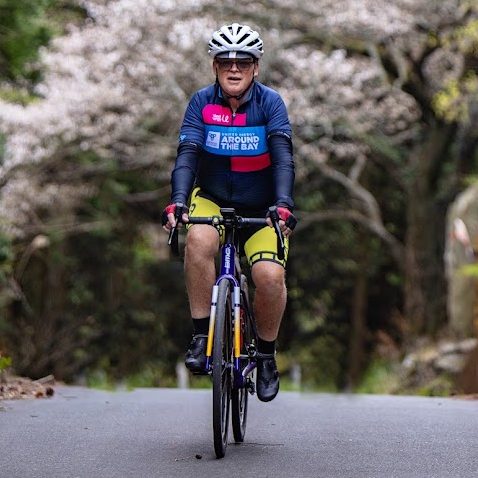
An eclectic mix here from guidebook to an ancient novel, an insightful view of modern Japan to our namesake, the classic novel Shogun!

